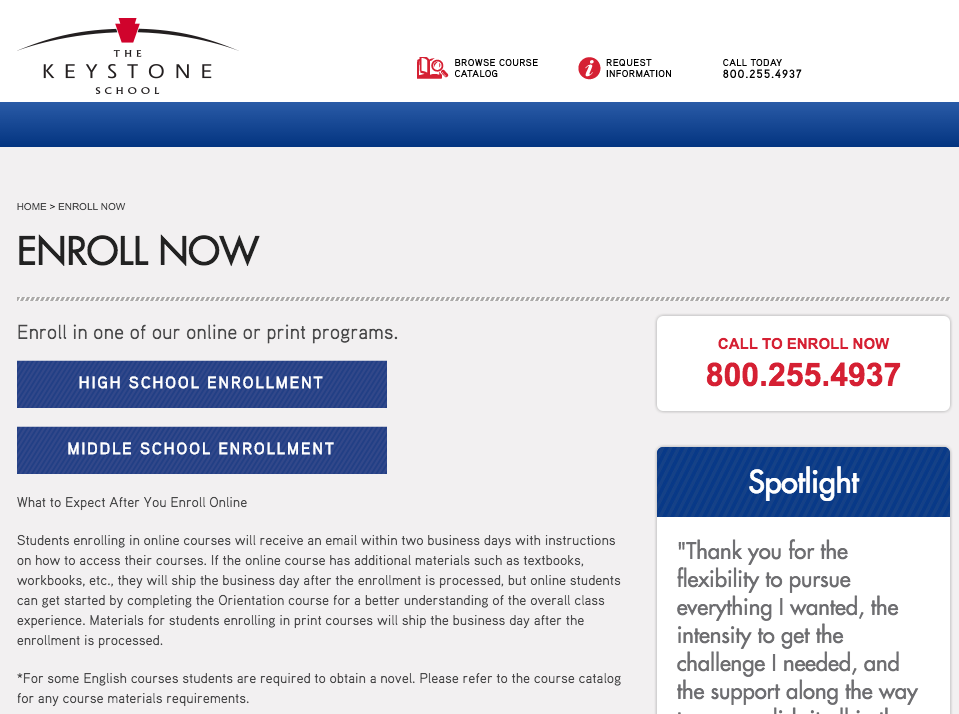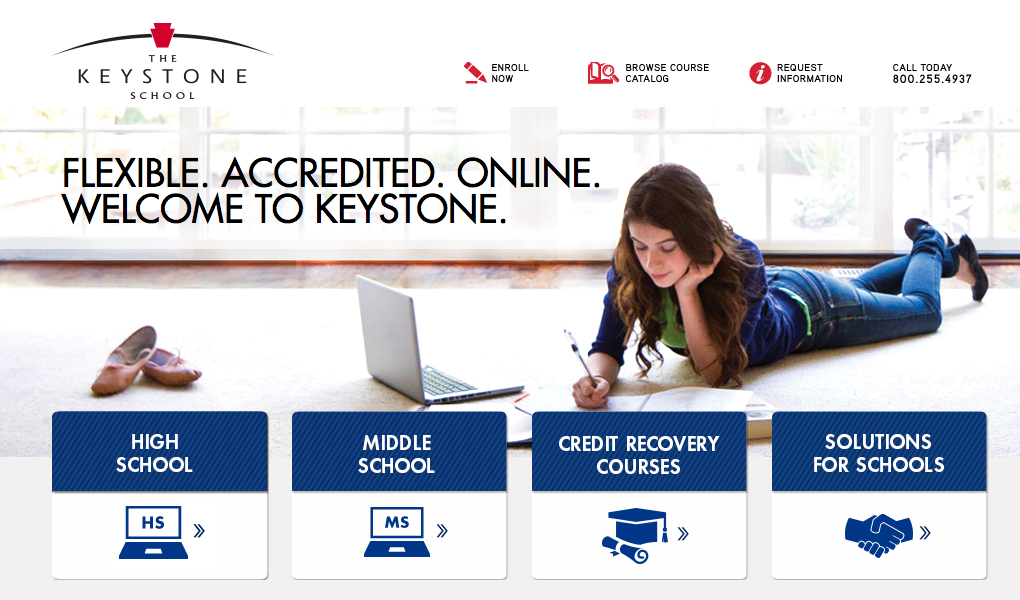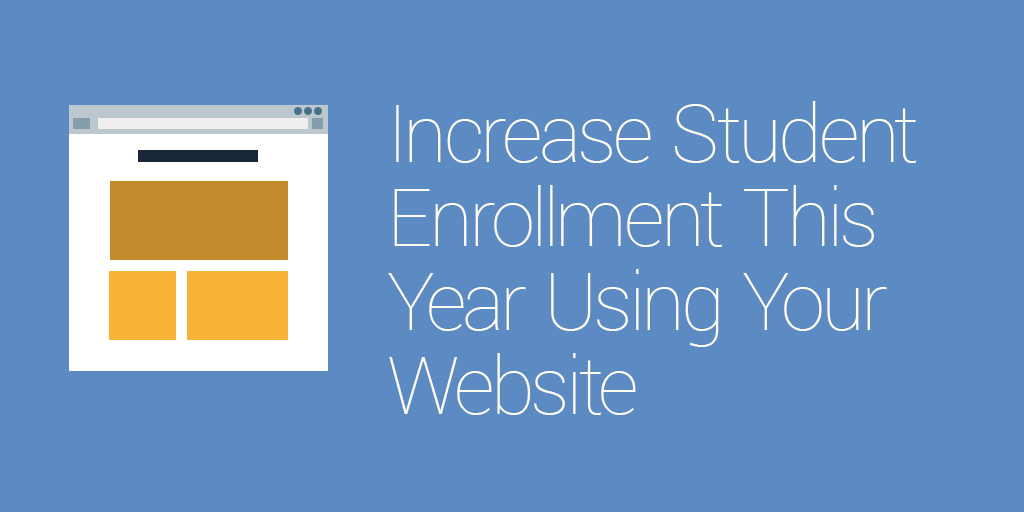Every school wants to increase their enrollment numbers, but not every school can afford a dedicated employee to sell their school’s good qualities to prospective parents.
But what if you learned that you could have a knowledgeable employee on-call 24 hours a day, seven days a week, just to inform parents about why they should enroll their children at your school?
Of course you’d probably think that situation was way too unrealistic (not to mention illegal). The secret? Using your school’s website to work for you instead of hiring a “real” employee.
Trust us, this “employee” will turn into one of your best assets, just like your actual employees. When set up properly, your school’s website can knock out the task of teaching parents more about your educational programs, while also increasing student enrollment.
Did we mention it works all the time? Holidays, late nights, and even when your school is closed, parents will have important information when it’s really convenient: on their time.
Don’t let today’s topic intimidate you; we promise to keep this whole process simple and easy to understand. Towards the end, you’ll be a pro at this.
[content_upgrade cu_id=”2311″]Bonus: We have also created a simple template for you to use. Be sure to download this to help improve your school website.[content_upgrade_button]Click Here[/content_upgrade_button][/content_upgrade]
Write Useful, Parent-focused Content
First and foremost, you need to update the content that lives on your website. This is the actual copy that prospective parents will read to see if your school is a good fit.
To get this right, you’ll need to provide (and write) parent-focused content for anything connected to your school’s website. Using a conversational tone makes it easier for parents to read, which means they’ll be interested in learning more about your school and what it has to offer. Write with simple language, as if you’re physically talking to your prospective parents in person. Keep your tone easily understandable, yet still professional.
Parents don’t have enough time these days to sift through long blocks of text, so you’ll want to limit your paragraphs to three sentences or less. Plus, this also makes it much easier to read on smaller screens (i.e. mobile phones and tablets).
On top of adopting a conversational tone and to-the-point copy, your content should also be useful to parents. Each article or website page should answer a common question or concern that comes up among parents, provide additional information and insights regarding a certain topic, or a combination of both.
Action tip: Review each page on your website to see if you’ve followed these guidelines. Before you get started, determine the problem or question your page is solving or answering and review your copy to see if it addresses this concern in a direct and conversational way. If it doesn’t, you’ll need to update it as soon as possible. Repeat this process for each page on your site.
Write Often & Consistently
The best way to keep parents informed is to update your school’s website as often as possible. Once parents see that your school’s website is the best way to learn more about your school, they’ll be more likely to do so.
This means you’ll need to change the content of your website fairly often. Now, we’re not talking about updating each and every page. Rather, we’re referring to posting updated information like general announcements, event details, and maybe even some informative blog posts each week.
Speaking of your blog, this is a great place to answer common questions that prospective parents may have. So if you notice that a few parents have asked the same questions about school bus routes or extracurricular activities in the past, you can create a post that dives deeper into these topics.
Action tip: To make this work without adding to your already growing to-do list, choose a different teacher each week to be in charge of writing a blog post about what your school’s up to. Prospective students and parents will want to see what they can expect from your school, so what better way to do this than to have an insider’s look from your teachers? After all, your teachers have firsthand experience when it comes to parental concerns and questions so they’ll be a great resource for finding the best ideas to share. Plus, each teacher can highlight their hard work and help spread different yet important messages.
Make it Super Easy for Parents to Get in Touch
With useful content, parents will undoubtedly want to take the next steps towards learning more about your school, or even starting the enrollment process. Let’s make this as easy as possible for them.
By using call-to-action headlines and buttons that have phrases such as “Learn More”, “Enroll Now”, or “Contact Us”, parents will understand right away that these links offer further assistance and are a means of reaching someone at the school.
Make sure these links stand out from the rest of the items on the page. You can do this by selecting a larger or bolder font size as well as changing the color to something brighter or more attention-grabbing.
Here’s an example of what that would look like:

It’s also a good idea to display your phone number or email address prominently on each page. This makes it much easier for parents to contact your school right away.
Here’s what that would look like in the header:

And in the footer:

Keep in mind, you don’t want to have too many calls-to-action competing with each other on the same page. With that said, be sure to choose one action for parents to take per page at a maximum.
Action tip: Check out each page on your site to see if you’ve made it easy for parents to take action; make sure that only one action is listed per page.
Double check that a good phone number and email address are listed prominently on each page. The perfect place to tuck these important items is in your footer or header.
Use Your Content to Guide Parents to Take Action
In the same way that call-to-action headlines and buttons guide parents to take the next steps, so should your content. This is a more subtle approach than changing the color of a button, yet, it’s just as effective. Sometimes parents need a gentle nudge guiding them towards what to do next.
Essentially, as you write (or rewrite) the copy on your website (or a blog post), consider what actions you’d like parents to take. This could be as simple as encouraging them to sign up for your newsletter to stay in touch, directing them towards your enrollment form, or learning more about the enrollment process in general.
If you want actionable content to encourage newsletter subscribers, you can end each post with something like:
“Enjoyed this article? There’s plenty more where that came from. Sign up for our newsletter and you’ll stay informed with more helpful articles like these.”
And for the enrollment example, you can weave links to learn more throughout your copy and end with something along the lines of how to get in touch:
“We hope this answered some of your questions regarding our enrollment process. If it hasn’t, please feel free to email our team at anytime. We’d love to hear from you!”
[content_upgrade cu_id=”2311″]Bonus: We will show you a few more examples of this in our free resource that accompanies this article. Be sure to grab your copy today.[content_upgrade_button]Click Here[/content_upgrade_button][/content_upgrade]
Action tip: Decide what steps you’d like parents to take next and be sure to weave this goal throughout your copy and at the end of each page or post. Keep in mind, this should sound natural and authentic. Again, use the exact language you’d use in person.
Once you’ve knocked out these quick, simple tweaks to your website, it will begin working hard for your school and become one of your best assets. Just think: in a matter of weeks, you’ll see a noticeable difference in parent inquiries and student enrollment numbers, all thanks to the parent-focused website you created.

